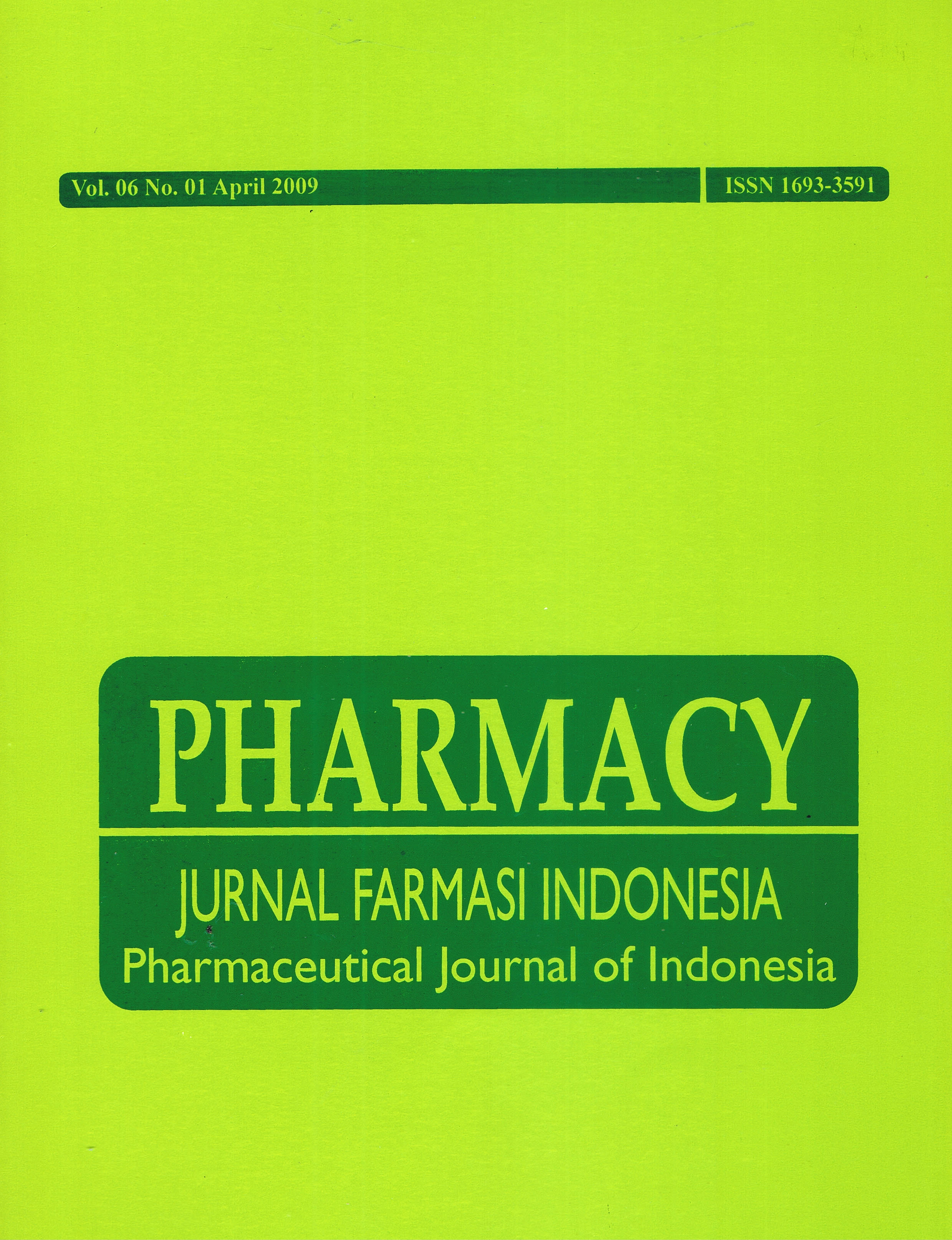UJI FOTOTOKSISITAS SEDIAAN KRIM MUKA “X” TERHADAP KELINCI PUTIH JANTAN
DOI:
https://doi.org/10.30595/pharmacy.v6i01.405Abstract
Abstrak Telah dilakukan penelitian uji fototoksisitas krim muka “ X “ terhadap kelinci putih jantan. Tujuan dari penelitian ini adalah untuk membuktikan apakah produk “ X “ menimbulkan efek fototoksik. Penelitian dilakukan menggunakan tiga kelinci putih jantan yang dicukur punggungnya sebanyak 1x1 inchi, kemudian diberi perlakuan dengan sampel untuk kontrol positif dan ethanol untuk kontrol negatif. Setelah 30 menit kelinci dipaparkan dengan sinar ultra violet dengan panjang gelombang 320 – 400 nm. Hewan uji diamati setelah 24 dan 48 jam, kemudian diberi skore sesuai dengn tabel tingkat keparahan eritema. Hasil dari penelitian menunjukan bahwa krim muka “ X “ positif menimbulkan fototoksik sebesar 100 % dengan rata- rata skor eritema 2,33 yang berarti eritema berbatas jelas. Kata Kunci : Krim muka “ X “, fototoksisitas, eritema. Abstract A research on phototoxicity testing of a “ X “ moisturizing cream. The aim of this research is to prove phototoxic effect on a “ X “ moisturizing cream. The research was done by to weigh three rabbits further to shave the hair from a 1x1 inchi on the whole back skin. There are two sites per animal, one side should be for a sample “ X “ moisturizing cream and another for a negative control. Thirty minute after dosing, animals was exposed to Uv – light 320-400 n exposure according the table of erythema formation score. The result of this research shows that “ X “ moisturizing cream give positif rate phototoxic effect 100% with mean score is 2,33 ( well – defined erythema ), and can be conducted that “ X “ moisturizing cream was proved have positif phototoxic effect. Key word : Moisturizing cream “ X “, phototoxic, erythema.References
. 2008. Niacinamide. http://.google.co.id/search?q=niacinamide.
Gad, Shayne C. and Chengelis, Christoper. P. Acute of Toxicology Testing Second Edition. 1998. USA: Academic Press.
Loomis, T.A, 1978. Toksikologi Dasar. Edisi 3 (Terjemahan). Imono, A.D. Semarang: IKIP Semarang Press
Lu, F., 1995. Toksikologi Dasar : Asas, Organ sasaran dan penilaian. Edisi 2, Terjemahan Edi Nugroho. Jakarta : Universitas Indonesia (UI Press)
Notoatmojo.S. 2002. Metodologi Penelitian Kesehatan Edisi Revisi. Jakarta : PT. Rineka Cipta.
Okumura, Y., Yamauchi, H., Takayama, S.,Kato, H.,Kokubu,M. 2004. Phototoxicity Study of a Ketoprofen Poultice in Guinea Pigs. http://www.jstage.Jst. 90.jp/article/jst/30/1/19/-pdf
Singarimbun, M., Efendi, S. 1989. Metode Penelitian Survey, LP3ES, Jakarta: LP3ES
Spielmann, H., Lovell, W.W., Holze, E., Johnson, B.E., Maurer, T., Miranda, M. A., Pape, W.J.W., Spora, O., dan Sladowski, D. 1993. http://altweb.jhsph.edu/index.htm
Tranggono, R.I., Latifah, F., 2007, Buku Pegangan Ilmu Pengetahuan Kosmetik. Editor, Joshita D (ED). Jakarta: PT Gramedia Pustaka Utama.
Downloads
Published
How to Cite
Issue
Section
License
Authors who publish with this journal agree to the following terms:
- Authors retain copyright and grant the journal right of first publication with the work simultaneously licensed under a Creative Commons Attribution 4.0 International License that allows others to share the work with an acknowledgement of the work's authorship and initial publication in this journal.
- Authors are able to enter into separate, additional contractual arrangements for the non-exclusive distribution of the journal's published version of the work (e.g., post it to an institutional repository or publish it in a book), with an acknowledgement of its initial publication in this journal.
- Authors are permitted and encouraged to post their work online (e.g., in institutional repositories or on their website) prior to and during the submission process, as it can lead to productive exchanges, as well as earlier and greater citation of published work (See The Effect of Open Access).






